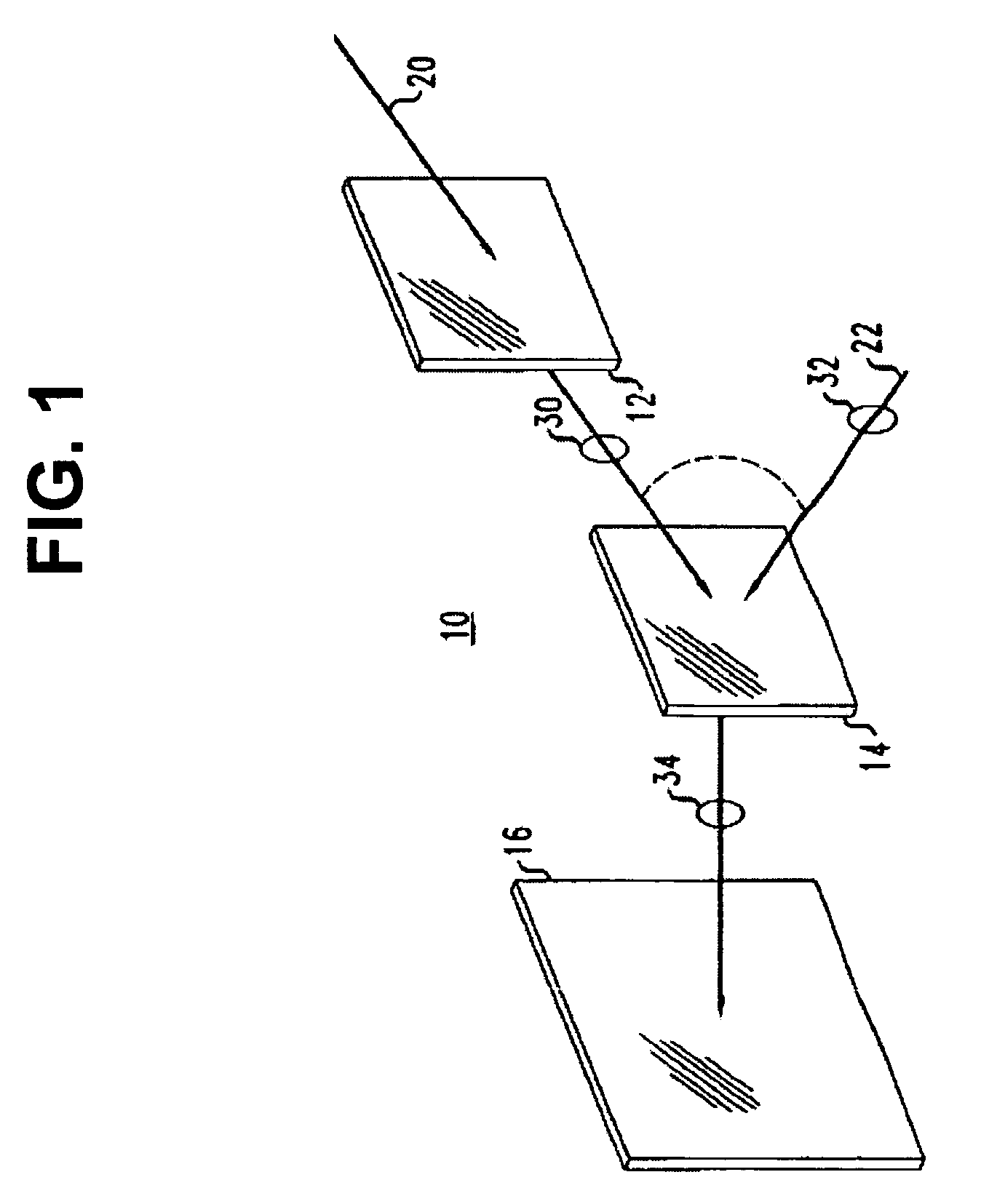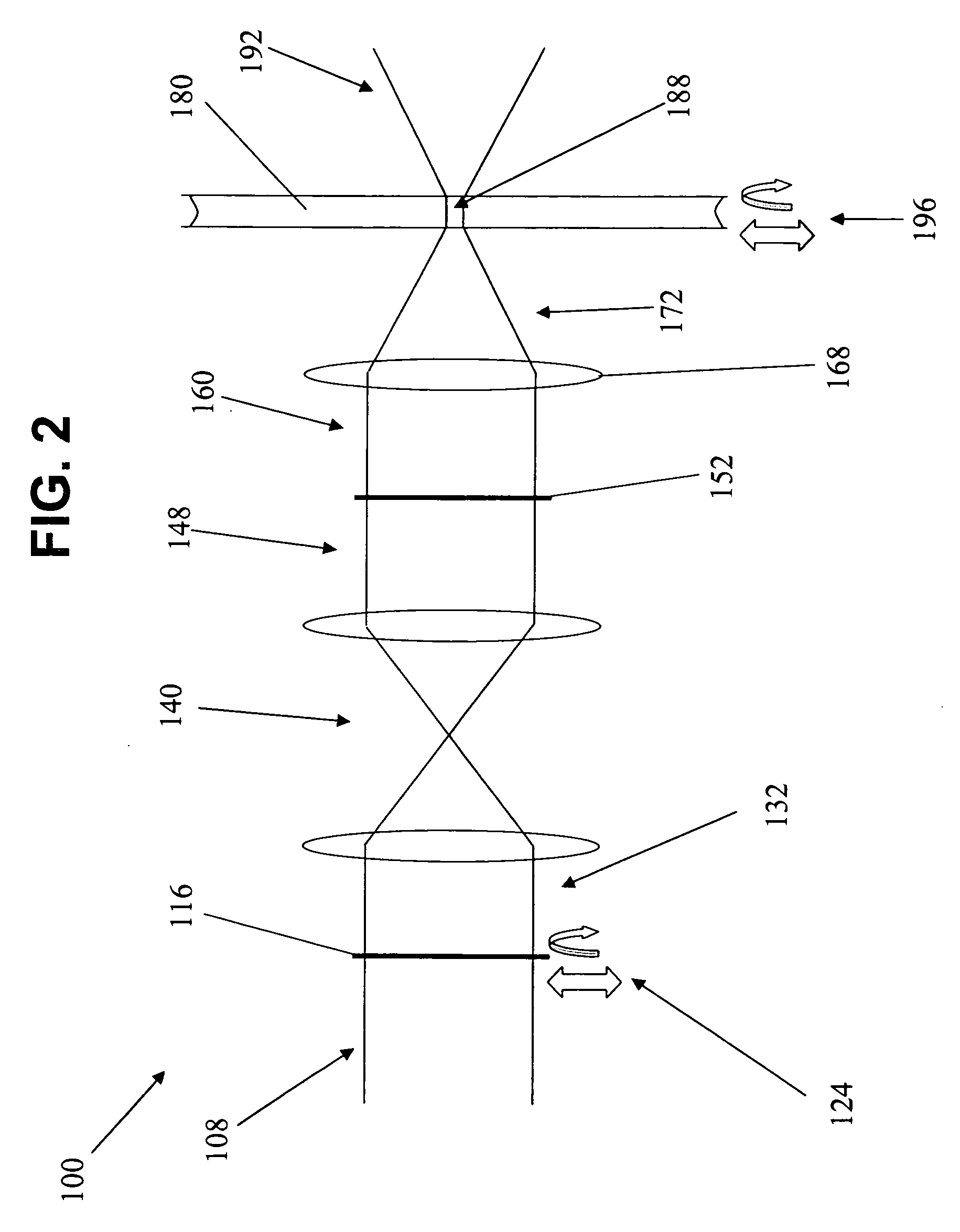Method and system for increasing holographic data storage capacity using irradiance-tailoring element
a technology of irradiance and holographic data, applied in the field of method and system for increasing holographic data storage capacity using irradiancetailoring element, can solve the problems of detriment to high-fidelity holographic recording, distortion of recording medium, negative and dramatic impact on the available storage capacity of holographic recording medium
- Summary
- Abstract
- Description
- Claims
- Application Information
AI Technical Summary
Benefits of technology
Problems solved by technology
Method used
Image
Examples
Embodiment Construction
[0048] It is advantageous to define several terms before describing the invention. It should be appreciated that the following definitions are used throughout this application.
Definitions
[0049] Where the definition of terms departs from the commonly used meaning of the term, applicant intends to utilize the definitions provided below, unless specifically indicated.
[0050] For the purposes of the present invention, the term “light source” refers to any source of electromagnetic radiation of any wavelength, for example, from a laser, etc. Suitable light sources for use in embodiments of the methods and systems of the present invention include, but are not limited to, those obtained by conventional laser sources, e.g., the blue and green lines of Ar+ (458, 488, 514 nm) and He—Cd lasers (442 nm), the green line of frequency doubled YAG lasers (532 nm), and the red lines of He—Ne (633 nm), Kr+ lasers (647 and 676 nm), and various diode lasers (290 to 900 nm).
[0051] For the purposes o...
PUM
 Login to View More
Login to View More Abstract
Description
Claims
Application Information
 Login to View More
Login to View More - R&D
- Intellectual Property
- Life Sciences
- Materials
- Tech Scout
- Unparalleled Data Quality
- Higher Quality Content
- 60% Fewer Hallucinations
Browse by: Latest US Patents, China's latest patents, Technical Efficacy Thesaurus, Application Domain, Technology Topic, Popular Technical Reports.
© 2025 PatSnap. All rights reserved.Legal|Privacy policy|Modern Slavery Act Transparency Statement|Sitemap|About US| Contact US: help@patsnap.com



